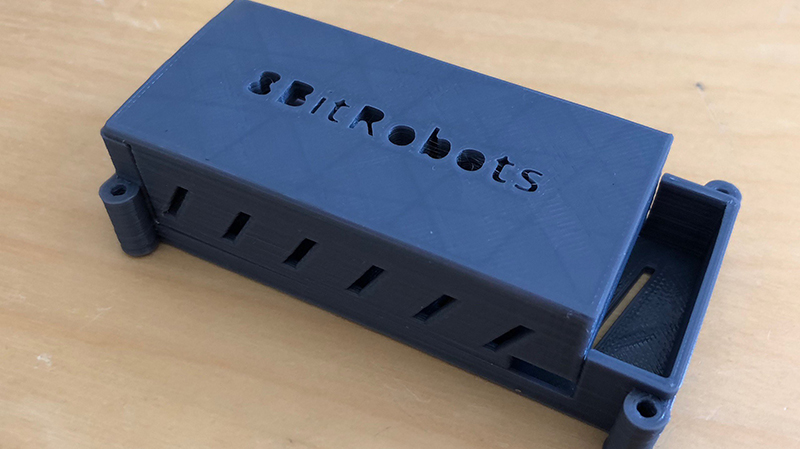Before the introduction of the Raspberry Pi, building robots was hard. The best solution to turning motors on a chassis was repurposing an old roomba. For the brain, maybe you could throw Linux on a router and move your rover around with an old Linksys. Before that, you could buy a crappy robotics kit, thrown together in a box and sold as an ‘educational kit’. I’m sure there are a few readers out there that built robots by wire-wrapping HC11s.
Now we have 3D printers and Raspberry Pis, and with that comes a golden age of robotics. One of the best robot brains out there is the 8BitRobots Modules from [Tim Wilkinson], an entry for this year’s Hackaday Prize.
The 8BitRobots Modules are made up of a few components, not the least of which is a Pi Zero, a fantastically powerful (for its price) Linux computer that is available for five dollars. With an add-on board, cleverly named the RoBonnet, the Pi Zero gets PWM outputs for servos and ESCs, an H-bridge for motors, TTL serial, encoder inputs, a pressure and temperature sensor, an IMU, a power monitor, and everything else you need for a successful Pi robot.
But hardware is only one part of the equation. If you want to program a robot, you need a software stack that makes everything easy. That’s where the 8BitRobots distributed robot platform comes in. This is a bit of Javascript running on the Pi that allows you to program the robot in Blockly, a Scratch-like graphical programming environment that’s been adapted to run in a web browser. It’s an all-in-one solution to robotics development and programming, and an excellent addition to this year’s Hackaday Prize.



















So along with shields, feathers, capes, hats…
we now have bonnets…
(yeah, I know, it was used because of the word robot and bonnet fit together)
Just call them expansion boards like a sane person and tell everyone else to shove it.
I need a new trendy word for a module, how about Lid, or maybe Pajamas.
I’m also a bit disappointed, I got an ODROID-GO today. Neat device, but they call the little 6-pin modules just that “modules”. When they could have called them Caps, Hangers, or Coins.
I can’t be the only one confused by the usage of a 32-bit linux computer in something called “8BitRobots.”
No, you’re not!
There are 10 types of people in the world. Those that understand binary, and those that do not.
There are 10 types of people in the world. Those who understand binary. Those who don’t. And those who knew a base 3 joke was coming.
So that’s what they call “the third base”…
Wrong endian, shite code or 1 kinds of people. You choose.
Where the hiz is one supposed to get the 8bitrobot moduke?
I could see this being widely used, if the Javascript interface is easy to use. I’m sure there is documentation for it somewhere, but I didn’t see anything on the Hackaday project page or the Gitlab page. Has anyone found it?
Just go to EZ-Robot and see a way of doing it properly, designed from the ground up to be a robot
ya like could afford fancy wire wrap after blowing cash on 68HC11, l298(s), 6500 polariod modules and … stuff was much more expensive got far less back in bronze age of ‘botics. Mostly rats nests, solder globs , and salvaged parts then. Not feeling ‘Golden Age’ yet. 8 bit. Hah.